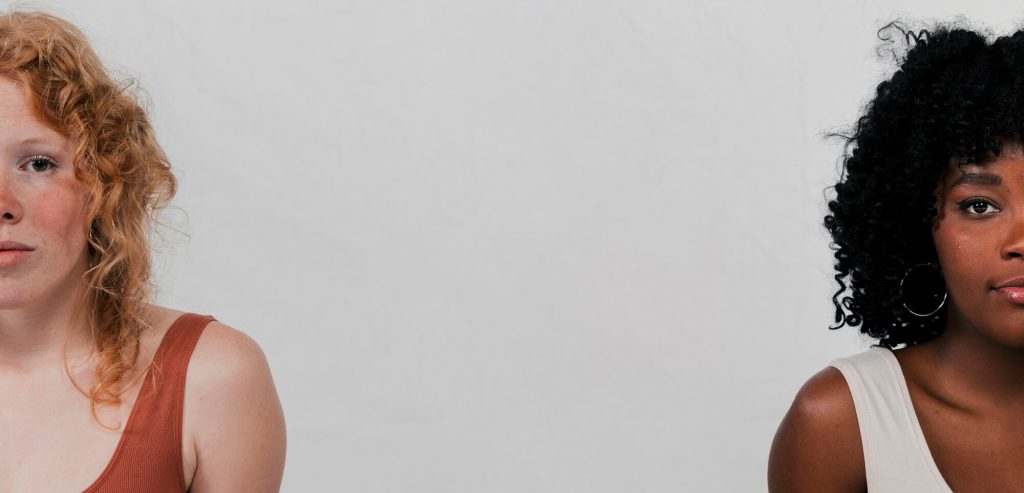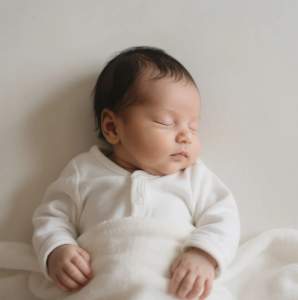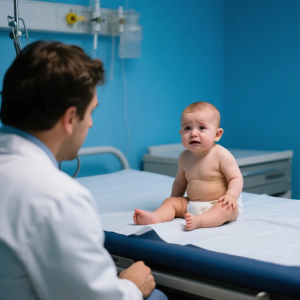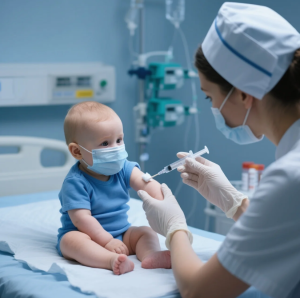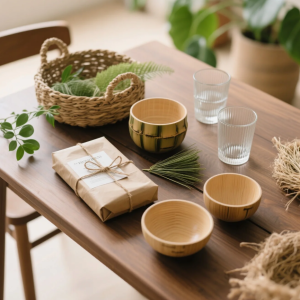
Welcoming a newborn into your home is a magical moment filled with joy, excitement, and a touch of anxiety. One of the biggest concerns for new parents is how to ensure their baby sleeps safely through those early months. Creating a safe sleeping environment isn’t just about comfort — it’s a critical step to protect your baby from sudden infant death syndrome (SIDS) and other sleep-related risks.
In this detailed guide, we will walk you through everything you need to know to create the safest, coziest, and healthiest sleep space for your little one.
💤 Why Safe Sleep Matters More Than Ever
Sleep is essential for your baby’s growth and brain development. But sleep safety is equally important. According to the American Academy of Pediatrics (AAP), following safe sleep guidelines can reduce the risk of SIDS and accidental suffocation by up to 50%.
The first year of life is the riskiest period for sleep-related incidents, especially during the first 6 months. Understanding and implementing safe sleep practices is a vital way you can protect your newborn.
🛏️ Choosing the Right Sleep Surface
Firm and Flat Mattress
The foundation of a safe sleep environment is the mattress. Experts strongly recommend a firm, flat mattress that fits snugly inside a well-ventilated crib or bassinet. Avoid soft surfaces like sofas, pillows, or adult beds, as these can increase the risk of suffocation.
Avoid Inclined Sleepers
While some inclined sleepers or special loungers are marketed as safe, the AAP advises against them because they can cause your baby’s head to fall forward, restricting airflow and increasing choking risks.
👕 What to Dress Your Baby in for Sleep
Keep It Simple and Comfortable
Dress your baby in lightweight, breathable clothing appropriate for the room temperature. Avoid overdressing or using heavy blankets, as overheating is a significant risk factor for SIDS.
Use Sleep Sacks Instead of Blankets
Sleep sacks or wearable blankets are safer alternatives to loose bedding. They keep your baby warm without the danger of suffocation that comes with loose sheets or heavy blankets.
🚫 What NOT to Put in the Crib
To minimize risks, never place the following items inside your baby’s crib:
- Pillows and loose blankets: These can cover the baby’s face and cause suffocation.
- Stuffed animals and toys: They can obstruct breathing or lead to accidental smothering.
- Bumpers: Though once common, crib bumpers have been linked to fatal incidents and are no longer recommended.
💤 The Best Sleeping Position for Babies
Back to Sleep — Always
The safest position for your baby to sleep is on their back. This position drastically reduces the risk of SIDS. Once babies can roll over on their own (usually around 4-6 months), they may choose their own position, but until then, always place them on their back to sleep.
Avoid Side or Stomach Sleeping
Sleeping on the side or stomach increases the risk of airway obstruction and SIDS. Even if your baby rolls onto their side during sleep, placing them on their back initially is the safest practice.

🌙 Create a Calm and Soothing Sleep Environment
Control the Room Temperature
Keep your baby’s room at a comfortable temperature—usually between 68 and 72 degrees Fahrenheit (20-22 Celsius). Overheating is linked to increased SIDS risk.
Use a White Noise Machine
Gentle white noise can mimic the sounds of the womb, helping your baby sleep better by drowning out sudden noises. Ensure the volume is low and the machine is placed far enough away.
🧼 Keep the Sleep Area Clean and Smoke-Free
Smoke-Free Zone
Exposure to secondhand smoke increases the risk of SIDS. Keep your home and car smoke-free at all times.
Maintain Clean Bedding
Regularly wash sheets and sleep sacks in hypoallergenic detergents to reduce allergens that might disturb your baby’s breathing or skin.
🧸 Room Sharing vs. Bed Sharing
Room Sharing Is Recommended
Experts recommend that newborns sleep in the same room as their parents for at least the first six months, but on a separate sleep surface like a crib or bassinet. This arrangement lowers SIDS risk by as much as 50%.
Avoid Bed Sharing
Though it might seem convenient or comforting, bed sharing significantly increases the risk of suffocation, accidental injury, and SIDS, especially when parents smoke, use alcohol, or are extremely tired.
⏰ Establishing a Sleep Routine
Consistency Is Key
Babies thrive on routines. Establishing consistent sleep times, calming pre-sleep activities (like bathing or reading), and a designated sleep space helps your baby associate that space with rest and relaxation.
Watch for Sleep Cues
Learn to recognize your baby’s sleepy signs—rubbing eyes, yawning, fussiness—and place them in their crib before they become overtired.
💡 Tips for New Parents: Handling Common Sleep Challenges
Dealing with Night Wakings
Night wakings are normal. Respond promptly but calmly to soothe your baby back to sleep without overstimulation.
Pacifiers and Sleep
Offering a pacifier at nap time and bedtime has been shown to reduce the risk of SIDS. However, if your baby doesn’t want it or it falls out, don’t force it.
🌟 Bonus: Baby Monitor Safety
Use a reliable baby monitor to keep an eye (and ear) on your sleeping baby without disturbing them. For added safety:
- Place monitors away from the crib to avoid strangulation hazards.
- Use audio monitors if video is too disruptive.
- Choose monitors with clear sound quality and low interference.
Conclusion: Your Baby’s Safe Sleep Is in Your Hands
Creating a safe sleeping environment takes thoughtful preparation, but it’s one of the most important gifts you can give your newborn. By choosing the right mattress, avoiding dangerous items in the crib, placing your baby on their back, and following expert safety guidelines, you’re dramatically reducing risks and promoting healthy sleep habits.
Every baby is unique, and as a parent, your intuition combined with trusted advice will guide you through this beautiful journey. Safe sleep isn’t just a set of rules — it’s peace of mind, knowing you’re doing all you can to protect your precious little one.

